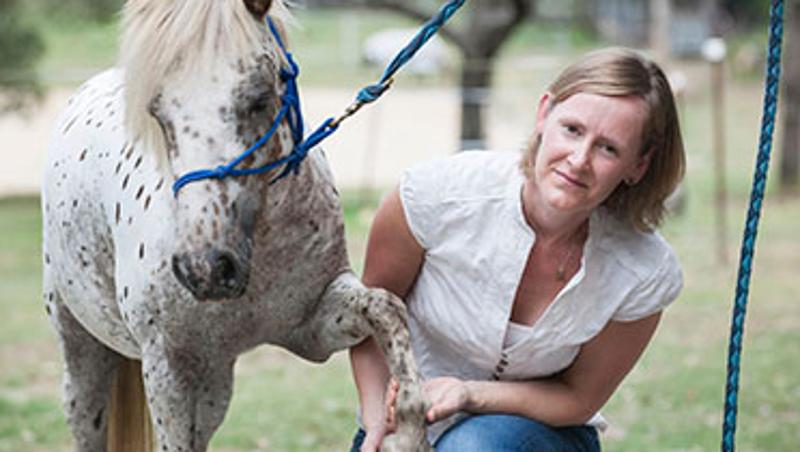
It is a disease that has taken the life of Black Caviar's brother, the most expensive yearling sold at public auction in Australia, but to the average horse owner laminitis is a killer that often strikes without warning.
Dr Melody de Laat, from QUT's Science and Engineering Faculty, said laminitis - also commonly known as Founder - was a complex and painful condition of the horse's hoof and that it could affect up to 34 per cent of the equine population.
"It is the second most common cause of death in domestic horses due to euthanasia and one of the most common reasons horse owners seek veterinary advice," Dr de Laat said.
"It strikes fear in the heart of any horse owner because it is difficult to treat and there is no cure."
In a bid to counter the deadly effects of laminitis, QUT is conducting a worldwide study to understand what predisposes horses to repeatedly fall prey to this chronic disease.
"The QUT Laminitis Study is trying to find out how frequently different forms of laminitis recur, because once a horse develops the disease it is at greater risk of re-occurrence," she said.
Dr de Laat said the most widespread form of laminitis was linked to metabolic disease commonly associated with overweight ponies grazing on lush pastures.
But she said all horses were at risk and the condition had affected many champion performance horses at the peak of their career.
"Due to improvements in pasture quality and modern husbandry practices, overfeeding has become common and equine obesity is reaching record levels," she said.
"If we can better understand the risk factors associated with laminitis, we can look at developing new prevention and treatment strategies.
"Our ultimate aim is to make laminitis a manageable disease and improve horse welfare."
Dr de Laat said QUT researchers were seeking the support of veterinarians and horse owners who could help by enrolling animals that are affected by laminitis in the study.
"We are looking for detailed information on cases so that we can try to determine what causes laminitis. We will then follow the horse for two years to see if the disease re-occurs."
"Laminitis is a distressing and potentially crippling disease which affects the sensitive lamellar tissues within the hooves of the horse."
"Signs a horse has laminitis can vary, although in many cases the disease is well under way by the time it is noticed as there often aren't visible signs of damage to the hoof.
"While we now know what causes laminitis, there are differing theories on how the damage occurs, which makes effective treatment difficult. A big concern is that all breeds and ages are susceptible, and when a horse gets it, all that vets can do is treat it and hope it gets better."
To take part in the survey click here
Range of photos are available here
RELATED STORIES
Researchers pave the way for women in science
Unmanned Aircraft: Countdown to Mission Possible
New QUT "crash test" means we are no longer dummies
Media contact:
Sandra Hutchinson, QUT Media (Tue, Wed, Fri), 07 3138 9449 or media@qut.edu.au
After hours, Rose Trapnell, 0407 585 901




